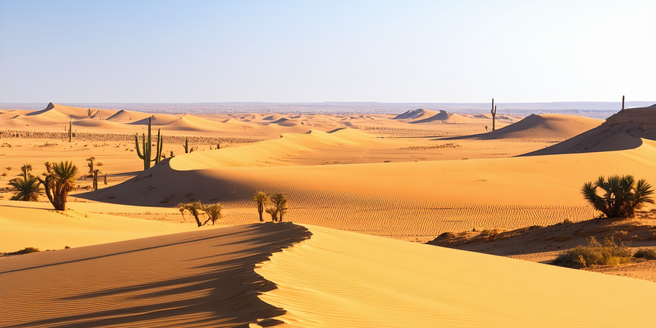
Understanding Desert Temperatures
Desert temperatures can be extreme, varying dramatically between day and night. Daytime temperatures can exceed 100°F (38°C), creating a hostile environment for both humans and animals. At night, temperatures can drop sharply due to lack of humidity and cloud cover, sometimes reaching below freezing. Understanding these variances is critical for preparing and ensuring safety in desert climates. Adaptation and survival in deserts require awareness of these fluctuations and the potential risks they pose. High daytime temperatures can lead to heat exhaustion, while cold nights can result in hypothermia. It is crucial to have appropriate clothing and equipment to shield oneself from these extremes and remain hydrated to combat dehydration caused by the scorching sun during the day.
Choosing the Right Sun Protection
Selecting adequate sun protection is essential for anyone spending time in the desert. The sun’s UV rays are particularly intense, and prolonged exposure can cause severe sunburn and increase the risk of skin cancer. Sunscreen should be a staple, but not just any sunscreen will do. Look for products with a high SPF rating, preferably 30 or higher, and ensure it’s broad-spectrum to block both UVA and UVB rays. Reapply frequently, especially if sweating. Additionally, wearing a wide-brimmed hat, UV-blocking sunglasses, and lightweight, long-sleeved clothing can provide an extra layer of defense against harmful sun exposure. Remember, the desert sun is unyielding; taking these precautions is not just advised but required for safe desert exploration.
Hydration Essentials for Desert Survival
Staying hydrated is the cornerstone of surviving in desert conditions. The dry, arid climate rapidly depletes the body’s moisture, making it essential to drink more water than usual. It’s advisable to carry enough water to last significantly longer than your planned journey, bearing in mind that one gallon (about 3.7 liters) per day per person is a standard guideline. Electrolyte solutions or beverages can also help replenish necessary salts and minerals lost through sweat. Besides carrying water, knowing where to find additional water sources in the desert can be life-saving. Always plan routes with known water points and refill whenever the opportunity arises. Keep your water cool by storing it in reflective, insulated containers to prevent it from heating in the sun.
Protective Clothing for Harsh Conditions
Dressing appropriately is vital in desert climes, where both heat and cold can pose threats. Clothing should be lightweight yet cover as much skin as possible to shield against sunburn and prevent moisture loss. Fabrics like cotton and linen allow for breathability while reflecting sunlight. Loose-fitting clothing is recommended to provide ventilation and airflow, helping to regulate body temperature. A wide-brimmed hat protects the face and neck, and a scarf or bandana can guard against dust and sand. Footwear should be sturdy, offering traction on loose sandy terrain while protecting against the scorching ground. Consider layers to address the significant temperature drop at night, ensuring warmth as the desert shifts from hot days to cool evenings.
Emergency Tools for Desert Travel
Navigating the desert safely requires specific emergency tools that can make the difference between safety and danger. A reliable map and compass are vital for navigation, along with a GPS device for accurate location tracking. A well-stocked first aid kit is essential, addressing injuries from bites, cuts, or heat-related illnesses. A multi-tool can assist with numerous tasks, from fixing equipment to preparing food. Signaling devices such as mirrors or flares can attract help if needed. Portable chargers or solar-powered devices ensure electronics remain operational. Additionally, a stash of non-perishable food provides sustenance when resources are scarce. Emergency preparedness is crucial when venturing into the desert; the right tools enhance safety and support survival in unexpected circumstances.
Innovative Cooling Solutions
Innovative cooling technologies can be vital in ensuring comfort and safety in extreme desert heat. Portable misting fans offer a refreshing way to cool down when stationed at campsites or during rest periods. Evaporative cooling towels or vests use the evaporation process to lower the surface temperature of the skin. Modern cooling fabrics designed for apparel wick moisture away and maximize airflow. Hydration packs integrated with cooling systems provide hydration while reducing body heat—a dual advantage in desert exploration. Solar-powered coolers and bladders keep water supplies cold, ensuring that the drinking water remains refreshing despite the surrounding heat. Such solutions can greatly enhance comfort and safety, allowing for extended exploration and activities even under harsh sun and high temperatures.
